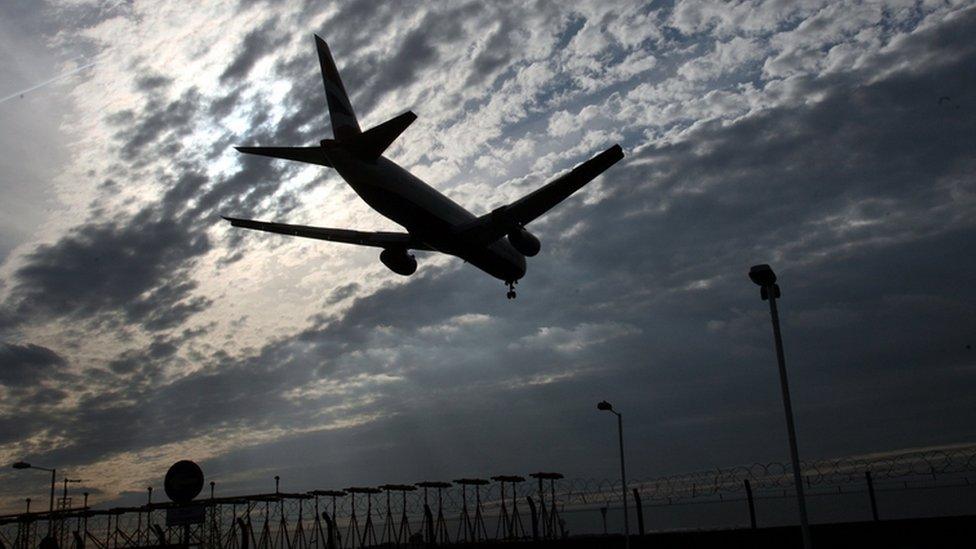Drones and planes in mid-air near misses increase
- Published
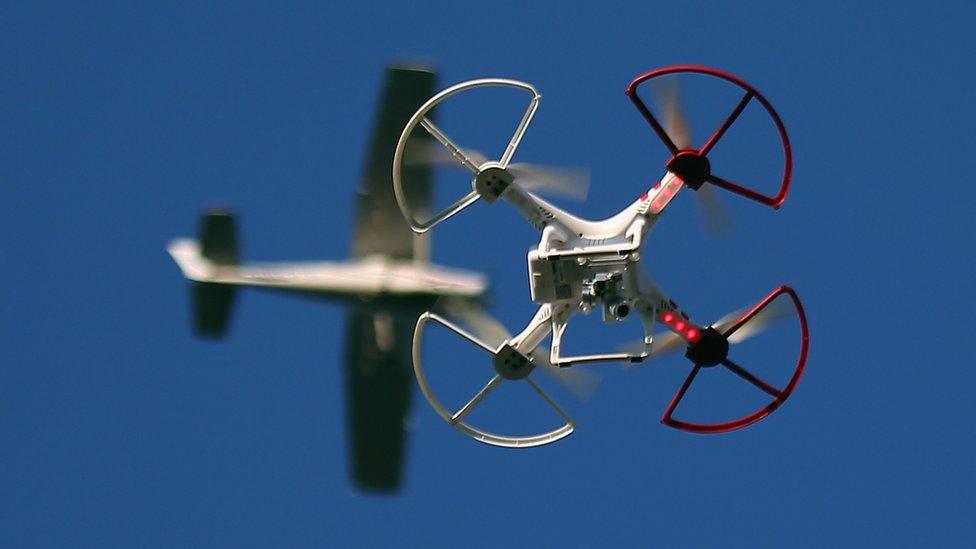
The Civil Aviation Authority said the use of drones had increased significantly in recent years
More near misses between drones and aircraft over the UK were reported in the first six months of 2016 than the whole of the previous year.
New figures show there were 34 reported near misses between January and June, compared with 29 for all of 2015.
Most were reported close to major airports including London Heathrow.
Aviation experts said the near misses were concerning, but research needs to be done to determine how much damage a drone could actually do to an aircraft.
Sion Owen Roberts, who flew manned and unmanned aircraft in the RAF but now trains people to fly small drones as Head of RUSTA, external, believes drones are potentially dangerous because their batteries are explosive.
"Whilst I was serving in the RAF, it was always dangerous when we accidentally hit a bird," he said.
"A bird can cause significant damage to an aircraft and the same sort of damage could occur from a drone strike, LiPo batteries are extremely volatile and you wouldn't want one disappearing down an aircraft engine."
He believes the "proliferation" of drones among the public is a "huge worry", as many people are "blissfully unaware" of how dangerous they can be.
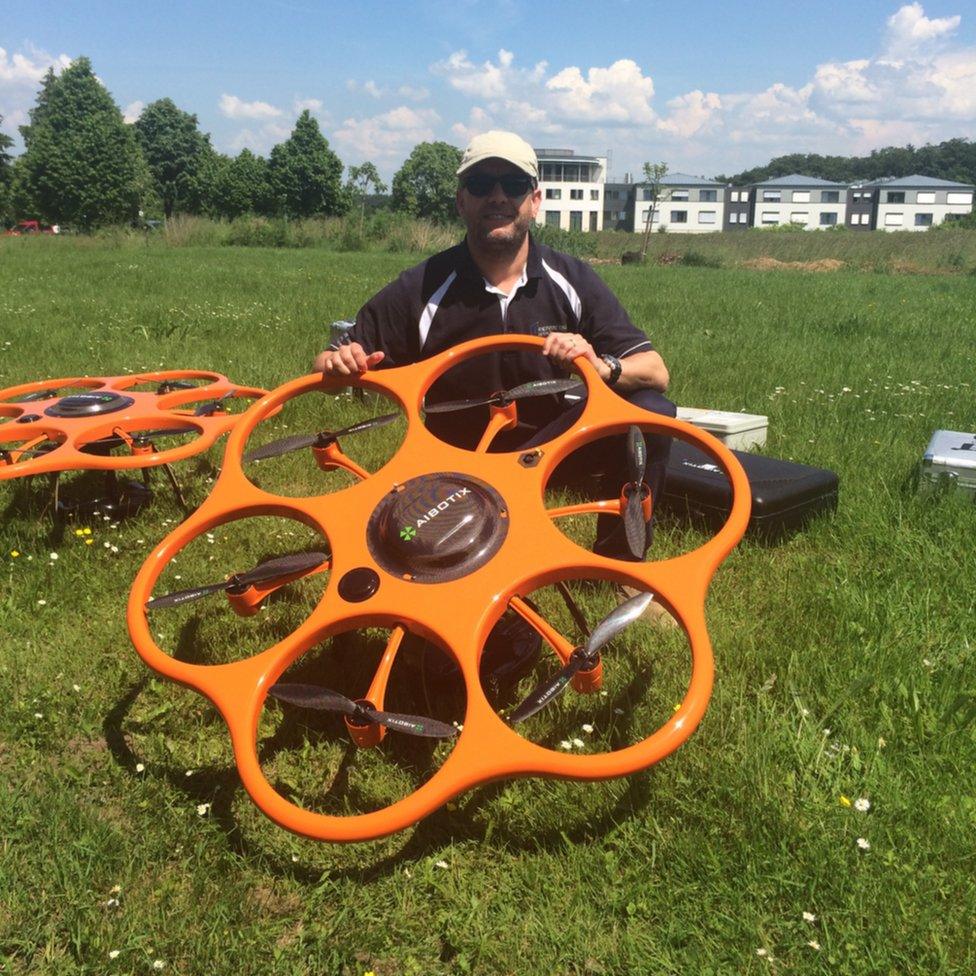
Sion Owen Roberts, who used to fly aircraft in the RAF, believes the "proliferation" of drones among the public is a "huge worry"
Drones accounted for the vast majority of the 43 incidents recorded between January and June by the UK Airprox Board. An airprox is a situation in which a pilot or air traffic personnel believe the safety of an aircraft may have been compromised by the proximity of another aircraft.
Eight near misses involved A320 Airbus planes, which typically carry about 150 passengers. A further five involved the A319 model, which seats about 156.
Other planes in reported near misses involved a Boeing 737, two Boeing 738s, a Boeing 757 and a Boeing 787.
Of the 34 drone incidents, 14 happened near London Heathrow, two near Gatwick, two near Stansted and two near Manchester.
Kent Law School associate lecturer Alan McKenna, a researcher on drone issues, said the new figures were likely to increase fears of a manned aircraft being brought down.
However, he said it was important to keep the fears into perspective.
"We don't have the necessary research results yet as to the dangers that relate to what will happen when drones of different sizes hit an aircraft or different parts of an aircraft," said Dr McKenna.
"Yes, we should be concerned and should be looking to identify pilots who are infringing the regulations but we need to keep a balance.
"What is very concerning is that with this rise in near misses we are still not able to identify who the drone pilots are. If you can't identify the drone pilots there is no way you are going to be able to enforce the regulations."
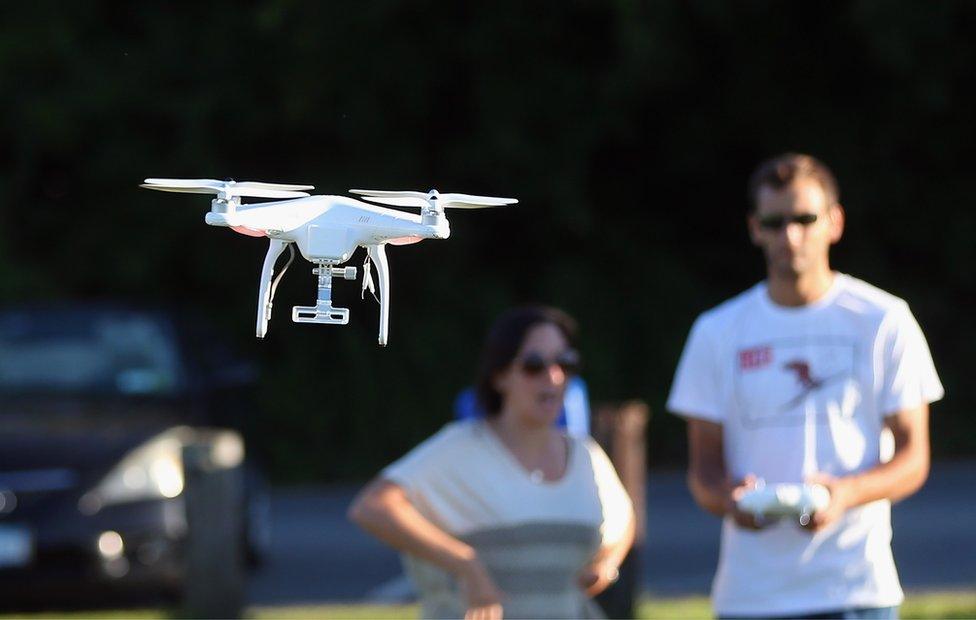
The Civil Aviation Authority said it works with retailers and manufacturers to educate users of drones about the risks
The first person prosecuted in the UK was Robert Knowles from Barrow-in-Furness, Cumbria who was fined £800 and ordered to pay £3,500 costs after admitting to flying a small unmanned surveillance aircraft within 50m of the Jubilee Bridge on the Walney channel. His drone was recovered from water near a nuclear submarine facility operated by defence company BAE Systems.
The first collision between a drone and a passenger plane was reported in April, but Transport Secretary Patrick McLoughlin later told MPs it was not thought to be a "drone incident".
Air accident investigators said they had not ruled out a drone but had no evidence to support the suggestion.
Click here for an interactive map of reported near misses, external.
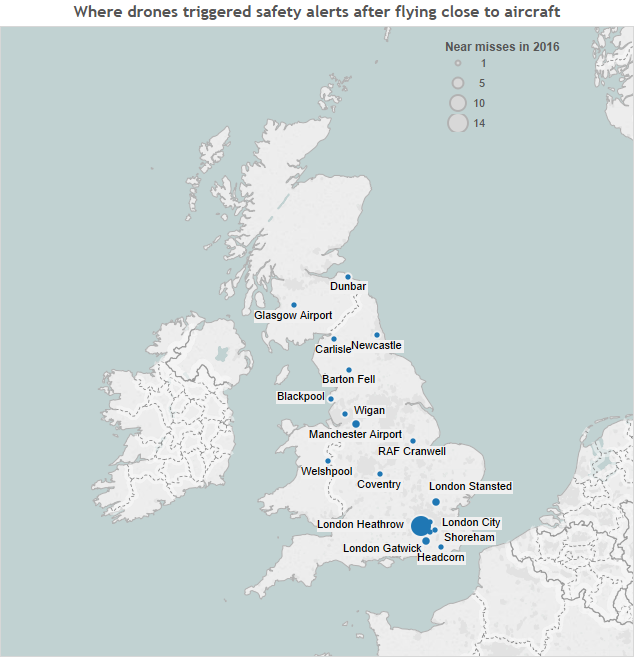
Craig Lippett, chairman of ARPAS-UK, external, the trade association for the UK drone industry, said some of the reported near misses may not have involved drones at all.
"A lot of these encounters were at heights you are unlikely to encounter drones; there are some reports at above 7,000 or 10,000ft," he said.
"Most commercially available types have limited battery power and can probably only reach 1,500ft."
Mr Lippett said his members operate legally, professionally and safely, but he is concerned that recreational users do not understand the law.
A spokesman for the Civil Aviation Authority said: "There has been an exponential rise in the number of incidents and unfortunately they are still coming in on a weekly basis.
"We work with retailers and manufacturers to educate users of drones about the risks and to remind them that it is not appropriate to fly them near airports."
The CAA warns people on its website not to fly a drone above 400ft (121.1 metres) and to always keep it within sight, otherwise they risk being fined for dangerous flying.
A Department for Transport spokeswoman add said: "Tough penalties are already in place for misuse of drones, including up to five years' imprisonment for endangering an aircraft. We are also leading international efforts to develop a stringent regulatory framework, working closely with the Civil Aviation Authority, industry and airline operators.
"We will be consulting on proposals, including registration and licensing options, before a government strategy is published later this year."
- Published9 December 2014
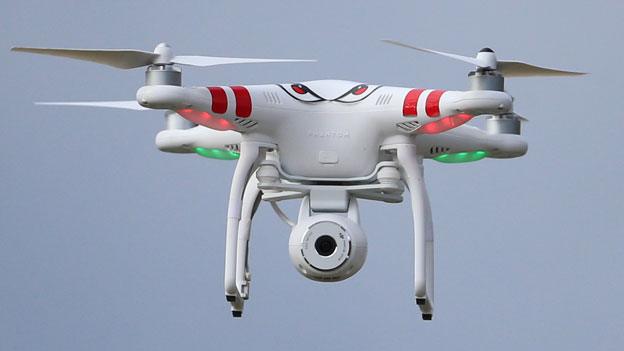
- Published29 January 2016
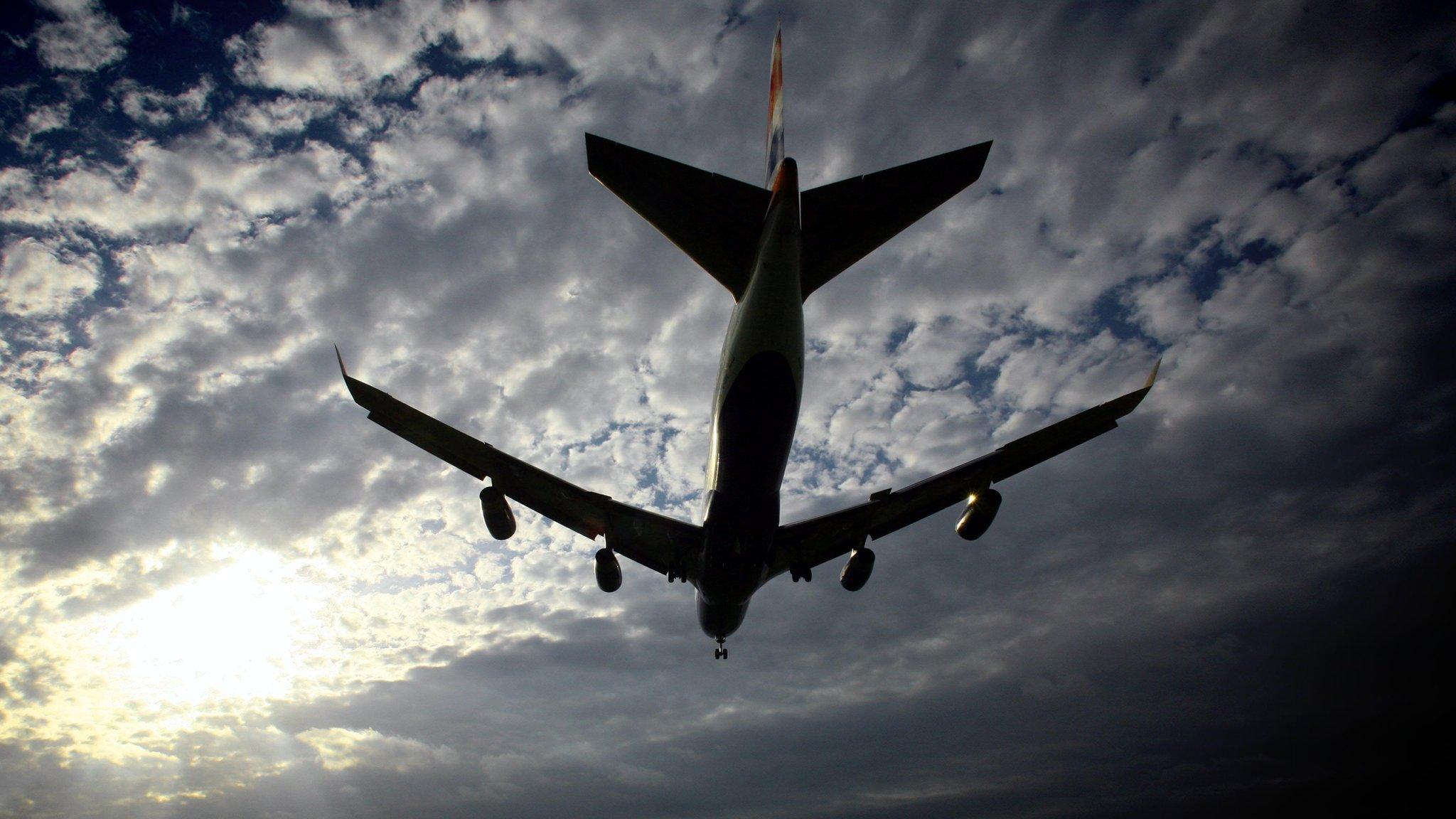
- Published27 October 2014
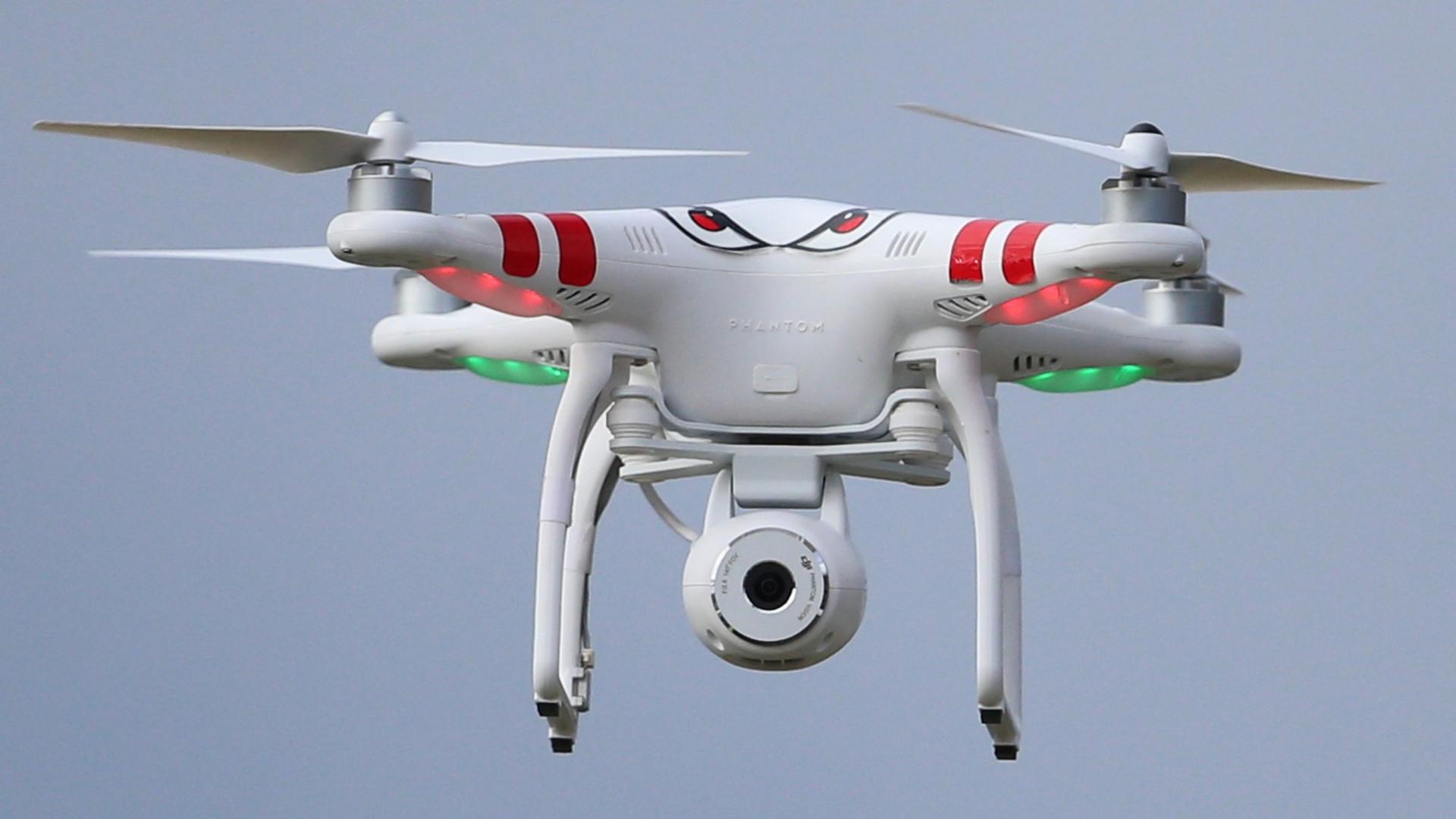
- Published2 March 2016
